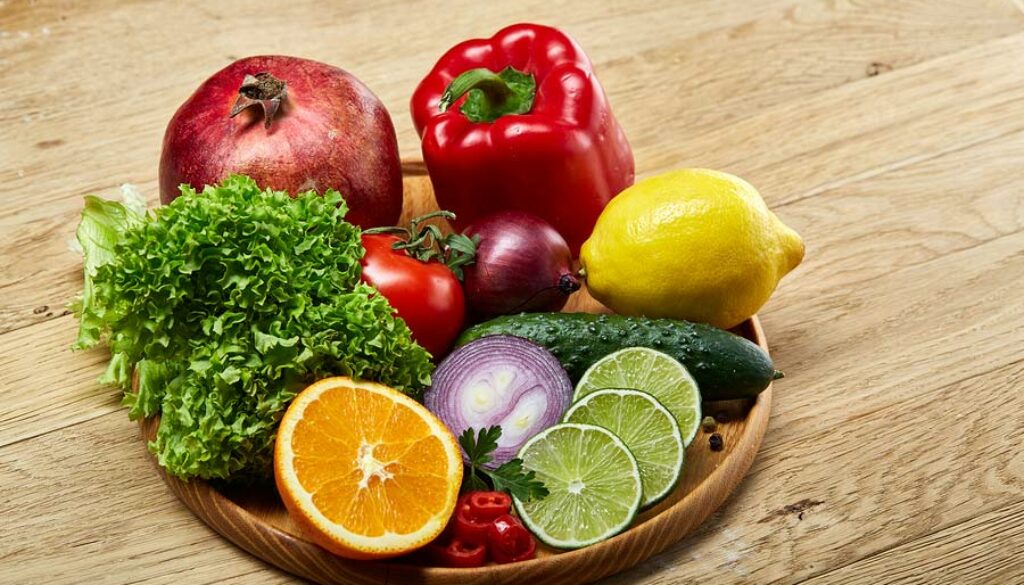March Means Basketball, But Did You Know…?
March is National Nutrition Month
Let’s all take a quick break from the Madness to check in on our nutrition status. March is the perfect time for a nutrition gut-check (pun intended): it falls right between clearing out the last of the holiday leftovers and getting ready for that well-deserved beach vacation. This year’s theme for National Nutrition Month is Go Further with Food. Here are some easy ways to apply this idea to improve your nutritional game.
Plan your first few meals of the week ahead of time.
Planning out some meals at the start of the week instead of waiting until hunger kicks in can make a huge difference in what ends up on our plates. We cannot expect our starving brain to help us to make good decisions while in survival mode. Trying to decide what to eat when you are very hungry usually leads to grabbing things that are readily available: packaged snacks, fast food, and frozen entrees.
Instead of waiting until the last second, pick three meals to make when it’s time to go grocery shopping. Try to cook 1-2 meals before the work week starts. This means we make it until at least Thursday before the dreaded “What’s for dinner?” question pops up. What you cook in your kitchen can be simple (we’re not talking gourmet meals for any given Tuesday here), but it’s inevitably healthier than anything you can pick up on your way home. It’s also more likely to be balanced and include a hefty serving of veggies.
Try to pay attention to your energy levels towards the end of the week when you’ve had 3 or 4 home-cooked meals. Notice that difference? The extra effort to plan ahead pays off when we roll into the weekend bright-eyed and ready to have some fun!
Reduce food waste.
Nothing is more frustrating than spending money on beautiful fruits and vegetables that end up going bad before we cook them. Or spending the time to cook a nice meal, then put the last serving of it in the trash because it got lost in the back of the fridge. Keep these tips in mind to help make your food last:
- Planning helps here too so that we only buy what we plan to make this week.
- Check your fridge and pantry to see what you already have before going grocery shopping. Build meals around items that need to be used soon. Make a shopping list and stick to it.
- Freeze items that you need later in the week or that may go bad before you use them (cut up veggies and fruit into the size you will need before freezing). Fill ice cube trays with water or olive oil and add herbs that won’t be used again this week. Portion the last serving or two of a cooked dish into separate containers, freeze, and take for lunch next week. Label everything that goes into the freezer with a date, and always use the oldest dated item first.
- Know the best way to store the vegetables and fruits you buy. For the best place to store these items and when to wash them, check out this vegetable storage chart. It’s also important to store the right items together and keep others separate; the ethylene gas released by certain produce items will make others go bad quickly. Check out another veggie storage chart and info-graphic for examples.
Feel better with energy from real food.
The food we eat affects every cell of our body. What we choose to eat most frequently over time has the biggest impact on our health and how we feel.
While it’s imperative to take any medications prescribed by your doctor, food can help improve many health conditions. Let food take you further in supporting your health and how you feel daily. Eating whole foods rich in vitamins, minerals, and fiber will best provide your body with the components it needs to function efficiently.
Here are some examples of how eating real can improve your health:
- Headaches – Focus on foods high in magnesium, like spinach, broccoli, almonds, pumpkin seeds, avocado, and dark chocolate.
- High blood pressure – Focus on foods high in potassium, like sweet potato, white beans, edamame, chard, and beets. (Beets also help increase nitric oxide in the body, which helps to lower blood pressure).
- High cholesterol – Focus on foods high in fiber, like non-starchy vegetables, beans, and lentils.
- Inflammatory conditions, like arthritis – Focus on anti-inflammatory foods, like ginger, turmeric, garlic, cherries, salmon, and green tea.
- Poor mood – Focus on foods that are natural mood boosters, like walnuts, blueberries, citrus, sardines, and whole grains.
Make food work for you and your lifestyle. Try out some of the tips above to go further with food this month. Let’s not jump on board with trendy diets because it seems like everyone is doing them. Food should taste good! Include things you enjoy, and be well-balanced to help achieve your nutrient needs and health goals.
Happy National Nutrition Month and good luck with those brackets!




